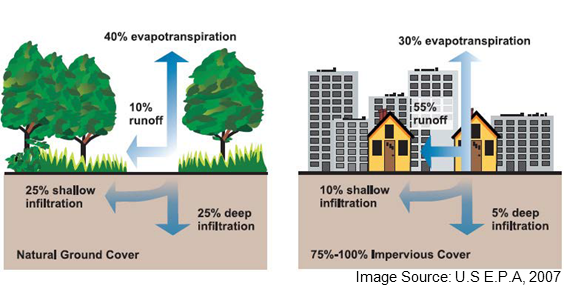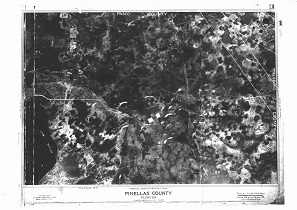As the adage goes: “When it rains, it pours.” As Lara’s adage goes: “When it pours, it floods.” Fortunately for us, we have lots of inconspicuous storm drains along our roadways to help prevent flooding.
I’d be willing to bet you probably don’t spend a lot of time thinking about storm drains or the stormwater they collect. Fortunately (or unfortunately) for me, not only is it part of my job to think about storm drains and stormwater, but it’s also my job to teach you about them. So, here we go!

So, what is stormwater?
Stormwater (also known as stormwater runoff) is generated when rain flows over land or impervious surfaces — such as paved streets, parking lots and building rooftops — and does not soak into the ground.
Stormwater isn’t exactly a sexy topic. Yes, I said it. But stormwater is a hugely important topic that we should all know about, here’s why:
- We get a lot of rain in Pinellas County — 49-plus inches in 2020, including 32 inches during our rainy season (May-October).
- Most of Pinellas County is developed, so we have dramatically altered the natural flow of water both above and below ground.
- Development means a lot of impervious surfaces, which translates to a lot of stormwater runoff.

As the National Water Quality Inventory 1996 Report to Congress stated, “Urban runoff was the leading source of pollutants causing water quality impairment related to human activities in ocean shoreline waters and the second leading cause in estuaries across the nation.”
There’s more to the story though. Let’s travel back to 1926 when the population in Pinellas County was 28,265 (no, that’s not a typo). Back then, when it rained, water would fall on natural land and infiltrate into the soil. Fast forward to today when population estimates are at 974,996. Now, when it rains, it often falls on some form of pavement and is forced to flow by gravity with everything it picks up along the way to a nearby (drumroll please…) storm drain.

What happens after that is often not on the top of people’s minds. Out of sight, out of mind, right?
Storm drains collect stormwater and funnel it away from roads, sidewalks, parking lots, etc. to prevent flooding. This is great for us, but it comes at a cost. That water is now contaminated and is flowing at a significantly faster rate than it would in a natural area. This can result in a lot of problems. Here are just a few:
- Erosion which can lead to foundation issues and stream widening.
- Murky waters from increased sediments picked up along stormwaters’ journey.
- Sewage overflows (you can read more about that in one of my earlier blogs).
- Increased stream temperatures as water travels along very hot surfaces.
- Pollution from litter; heavy metals like copper, lead and zinc; chemicals from car washing, pool water, pressure washing, pesticides; oil, grease and debris from vehicles; nutrients from leaf litter, pet waste, grass clippings and fertilizer.

If you really want to get into it, you can read a lot more here.
Why does any of this matter?
If you’re new to Florida (or even if you are not), you might not be aware that we have separate systems for treating stormwater and wastewater, unlike some other states. This is largely because we get so much rain, it would be impossible for our systems to handle the two inflows together. Stormwater is not treated at a wastewater treatment facility. It is either sent directly to a nearby body of water or is treated through stormwater pond systems. We need to do our part to help keep stormwater free from pollutants and reduce the amount of stormwater we create, and I’ll talk more about this in my next blog…stay tuned!
Blog Inspiration
I was recently awarded a mini-grant from the Tampa Bay Estuary Program, funded through sales of their specialty license plate. Through this grant, I will implement an Adopt-A-Drain program, modeled from the successful program in San Francisco. As part of this grant, I promised to educate people about stormwater runoff.
 0
0

